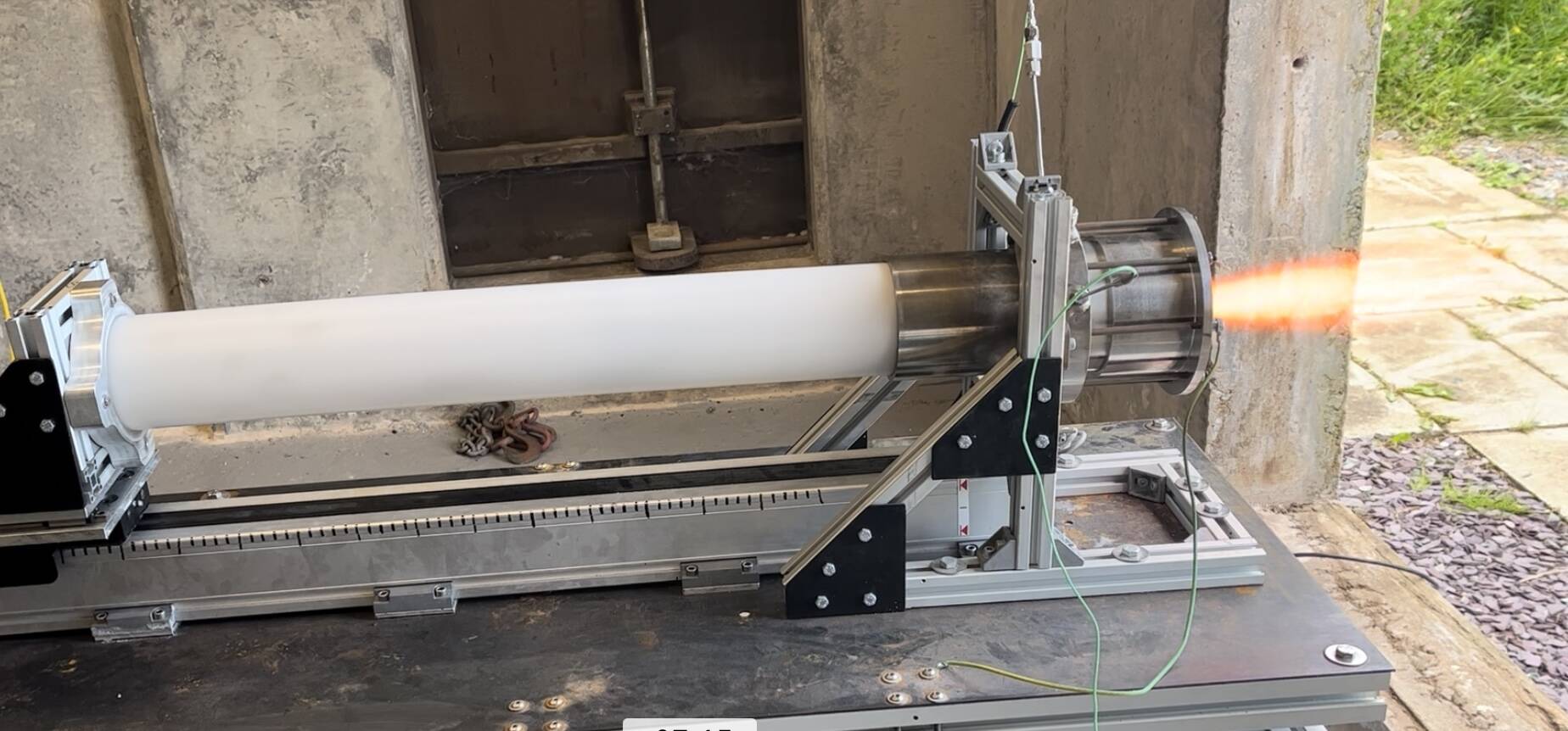Interview The concept of a self-eating rocket is rearing its head once again as engineers showcase their work at the AIAA SciTech Forum.
Autophage engines – where the rocket effectively consumes itself – were first proposed and patented in 1938. However, it took until 2018 before boffins managed to design and fire one in a controlled manner. Nearly five years on, and more progress is being made: more energetic liquid propellants can be used, and the fuselage can be fed into the rocket without buckling.
The next step will be producing a flight vehicle, something Krzysztof Bzdyk, a postgraduate researcher at the James Watt School of Engineering, tells The Register could make a suborbital test flight as soon as 2027. Fingers crossed.
The prototype, dubbed Ouroborous-3, generated 100 newtons of thrust at the MachLab facility at Machrihanish Airbase in Scotland. The video below shows the rocket in action, demonstrating the fuselage being consumed while the rocket is throttled and pulsed. The boffins presented their paper for AIAA SciTech attendees in Orlando, Florida this week.
A rocket’s mass changing during flight is one thing – rockets do get lighter as fuel burns – but dealing with markedly different geometry if the fuselage is shrinking is something altogether different.
Bzdyk tells us that while it is still early days, lessons could be learned from current launch vehicles with regard to thrust vectoring and reaction control.
“We may also look at spin-stabilized rockets,” he says.
A high priority is scaling up the rocket and creating a flight demonstrator. Bzdyk tells us: “Our tests coming up with the [UK] space agency are going to be looking at 1,000 Newtons of thrust, and our flight demonstrator in 2027 will probably be around 6,000 Newtons of thrust.
“For an orbital launch vehicle to deliver one payload into orbit, we’d probably be around 20,000 Newtons of thrust.”
To put that in context, one of the Rutherford engines that powers Rocket Lab’s Electron booster generates around 25,000 Newtons of thrust at sea level.
Not that there are plans to get too big. Bzdyk says the team does not intend to scale up too far. Instead, the plan is to use the technology to miniaturize launch vehicles further and overcome the challenges of propellant and structure as rockets get smaller.
“If you can use some of your structure as a source of fuel, that allows you to miniaturize it farther … I don’t think we’re really trying to encroach on conventional launch vehicles, it’s more looking at the small payload type launches.”
As satellites continue to shrink, the time might have come for the autophage rocket engine. With the structure of a conventional rocket making up anywhere from five to 12 percent of its total mass, using even a portion of that as fuel will make for a smaller rocket, or the potential for more payload.
Development of the team’s autophage engine will continue with the support of new funding from the UK Space Agency (UKSA) and the Sciences and Technology Facilities Council (STFC), part of UK Research and Innovation (UKRI). ®

Daisy Hips is a science communicator who brings the wonders of the natural world to readers. Her articles explore breakthroughs in various scientific disciplines, from space exploration to environmental conservation. Daisy is also an advocate for science education and enjoys stargazing in her spare time.








